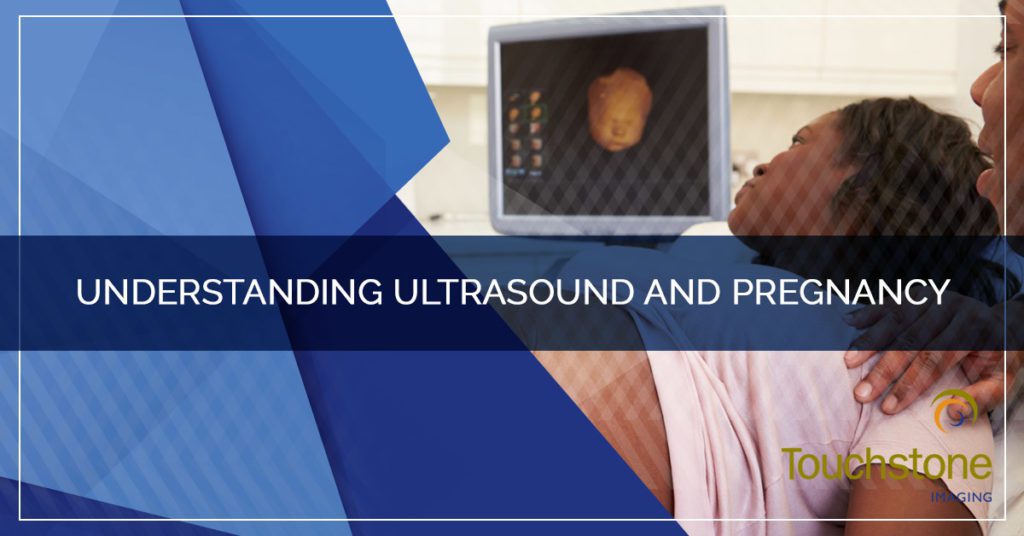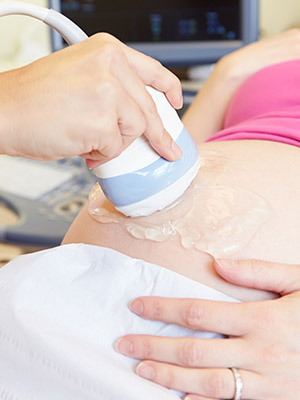Although ultrasound can be used for many different medical problems, people most often associate them with pregnancy. If you are pregnant, you may wonder if you really need an ultrasound scan, and how many you should have. We will explore the purpose of ultrasound during pregnancy, how many scans you should have, and where to get them done.
What is an Ultrasound?
A prenatal ultrasound may also be called a sonogram. Sound waves are used in this noninvasive exam to make a picture of your baby, your placenta, your uterus, and other internal pelvic organs. While some forms of medical imaging, such as x-rays, are not usually recommended during pregnancy, ultrasound is a safe way to see what is going on inside during pregnancy, including pictures of your baby’s heart and brain. There are numerous instances where an ultrasound should be used during your pregnancy.
Are Ultrasounds Safe For My Baby?
According to the American College of Obstetricians and Gynecologists (ACOG), ultrasounds do not pose a risk to the developing fetus. While birth defects, cancer, and developmental problems have all been studied to determine if ultrasound is implicated, no links have been found. Currently, ultrasound is considered safe and risk-free. It is also recommended that you only get the ultrasounds that are medically needed as determined by your doctor and only by technologists who are certified by the American Registry of Diagnostic Medical Sonography. If you are determined to have an ultrasound for “Keepsake” album purposes, be sure it is done in a facility that uses these certified technologists.
What Should I Expect During an Ultrasound?
An ultrasound is usually performed while you are lying on your back with the technologist moving the transducer (a small probe) across your abdomen. To help this transducer glide smoothly and to improve contact between the probe and the skin, a gel will be applied to your skin. This gel can sometimes be rather cold. You may be encouraged to drink a lot of water before the ultrasound so that your bladder is full. The images will appear on a screen, and your technologist will be able to help you decipher what is going on in the pictures. Depending on how far into your pregnancy you are, and how your baby is positioned, you might be able to see your baby quite clearly. A basic ultrasound takes about 15 to 20 minutes, while a more detailed ultrasound can take up to an hour.
When Do I Need an Ultrasound?
You should have at least one ultrasound during your pregnancy, as recommended by the ACOG, and it will usually occur between weeks 18 and 22. However, there can be other times that an ultrasound is recommended, including:
- Early Pregnancy: If you are unsure of your conception date, an early ultrasound can help confirm the date. Early ultrasounds are usually around 6 to 10 weeks.
- Genetic Testing: If your doctor sees a need to do genetic testing, you may have an ultrasound as part of a nuchal translucency test, chorionic villus sampling, or amniocentesis.
- Medical Conditions: If you have a medical condition, including diabetes or hypertension, your doctor may recommend that you have more frequent ultrasounds.
If you don’t have these extra ultrasounds, your mid-pregnancy test will give you all the information you and your doctor need to ensure a healthy pregnancy.
What Your Mid-Pregnancy Ultrasound Will Show
Even if you only get one ultrasound, there is still so much information that can be gained. Many parents look forward to this ultrasound as the first peek at what is going on inside. Your mid-pregnancy ultrasound can show:
- Your Baby’s Sex: You can usually find out if your baby is a boy or a girl during this ultrasound. There are instances where we won’t be able to tell such as if the baby is in an unusual position or their limbs are covering their genitals. Make sure you tell your technologist if you would prefer not to know your baby’s sex—they will honor your wishes and inform the radiologist (who interprets the ultrasound) not to report the sex in the ultrasound report. You may also want to have your technologist write down your baby’s sex to give to someone who can make you a cake or balloons that are part of a gender revealing party.
- Check How Many Babies Are in There: While you usually can suspect you are carrying twins or more during your first trimester, a mid-pregnancy ultrasound will confirm just how many babies are in there.
- Measure Your Baby: At this ultrasound, your technologist will measure your baby at the skull, thigh bone, and abdomen. If your baby is measuring much larger or smaller than expected, your due date may be off and need to be readjusted. If your baby seems to be growing too slowly, you may need more ultrasounds to track growth and make sure your baby is on track.
- Location of the Placenta: Your doctor will want to make sure that your placenta is not covering your cervix. This condition, known as placenta previa, can cause serious problems during delivery and your doctor will want to do follow-up scans to ensure that the placenta moves to a better place. Many times placenta previa that is detected early will have resolved itself by the time your due date arrives.
- Check Amniotic Fluid: Your ultrasound can show if there is too much or not enough amniotic fluid. If this is detected, your doctor will determine the cause and you may need subsequent ultrasounds.
- Check for Abnormalities: Your baby’s anatomy will be evaluated to make sure that everything is developing normally. Birth defects and other abnormalities can be detected through ultrasound. The umbilical cord will also be examined to make sure it looks normal.
This first ultrasound is usually very exciting for the parents and can give them a lot of information.
Other Indications for Ultrasound
There are some instances during pregnancy that your doctor will want to further investigate through ultrasound, including:
- Bleeding: If you are bleeding early in your pregnancy, it could be a sign of miscarriage. The heartbeat should be visible as early as 6 weeks, so an ultrasound can confirm that you have not miscarried. Bleeding in the latter half of your pregnancy can indicate problems with the placenta.
- Cesarean: If your baby is measuring very large, or is in a breach or other unfavorable position a cesarean section may be recommended by your doctor. If the placenta has not moved away from the cervix you also might be a good candidate for a cesarean section.
- Ectopic Pregnancy: Another thing that vaginal bleeding (and pain) can indicate is an ectopic pregnancy. This happens when the fertilized egg implants outside of the uterus. A molar pregnancy, when there is usually no viable baby, is another cause of bleeding and will be investigated.
If you have additional ultrasounds ordered, don’t panic! There are many times that your doctor is just ensuring that everything is normal and that your baby is on track.
3-D and 4-D “Keepsake” Ultrasound
If you want special pictures of your baby before he or she is born, a 3-D or 4-D ultrasound is an option. The best time to get these ultrasounds is between 26 and 32 weeks. These images are keepsakes for the parents, and oftentimes really bond them to their new baby. The 4-D ultrasounds can also give you a video of your baby’s movements. Touchstone Imaging centers offer 4-D ultrasound at some of our locations! But, never get a keepsake ultrasound at a facility which does not have sonographers certified by the American Registry of Diagnostic Medical Sonography! Quality and safety are hallmarks of a properly trained and certified sonographer.
Does Anything Affect Ultrasound Quality?
Does it really matter where you get your ultrasound done, or will the images remain the same no matter where you are? The skill of the technologist is a big factor in the quality of the images you can get from an ultrasound. At Touchstone Imaging, we have certified and skilled ultrasound technologists who can deliver quality images. When you have less experienced technologists, the detection rate of abnormalities or other problems can dip, so you want to make sure that you are getting all that you can out of your ultrasound. Choose Touchstone Imaging to be sure you are getting high-quality images from a skilled technologist.
So if you are pregnant, you now know what to expect from your ultrasounds. The number of ultrasounds you receive will depend on your unique situation, and what your doctor recommends. You will most likely receive at least one ultrasound during your pregnancy, and choosing Touchstone Imaging will ensure that you are getting the best! If you need an ultrasound, or a 4-D ultrasound, call us!



